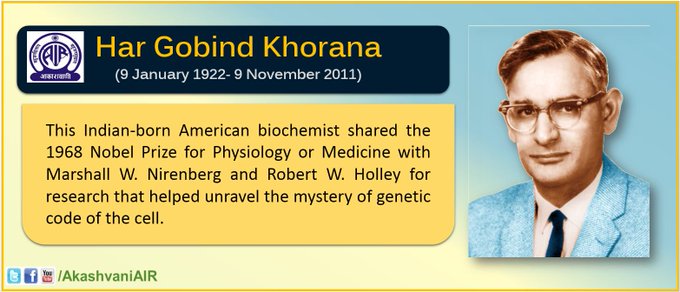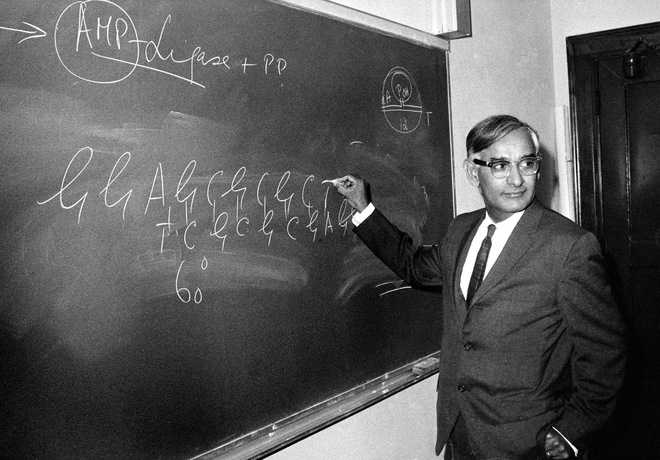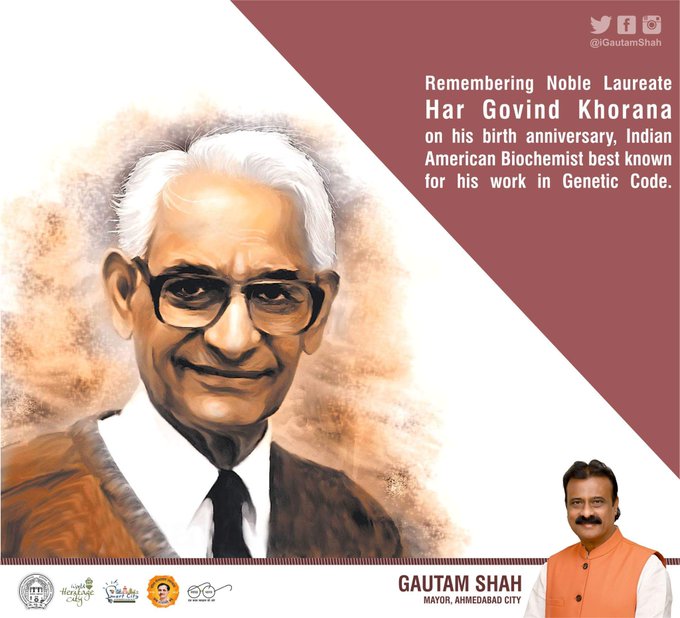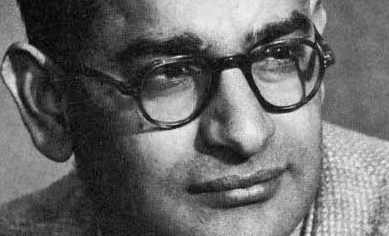
Wikimedia Commons Har Gobind Khorana.
Har Gobind Khorana, an “Indian-American biochemist” who won the Nobel Prize, is the subject of a Google Doodle honoring his 96th birthday. Khorana is best known for his work cracking the genetic code.
“Khorana’s passion for science started under a tree in the small village of Raipur, India, and grew into Nobel Prize-winning research on nucleotides and genes,” Google wrote in the biography announcing the January 9, 2018 Google Doodle.
According to DNAaftb.com, “Marshall Nirenberg, Har Gobind Khorana, and Robert Holley shared the 1968 Nobel Prize for Physiology and Medicine. Nirenberg and Khorana cracked the genetic code.”
Here’s what you need to know:
1. Khorana’s Father Taught Him to Read & Write, Which Wasn’t a Norm in His Village
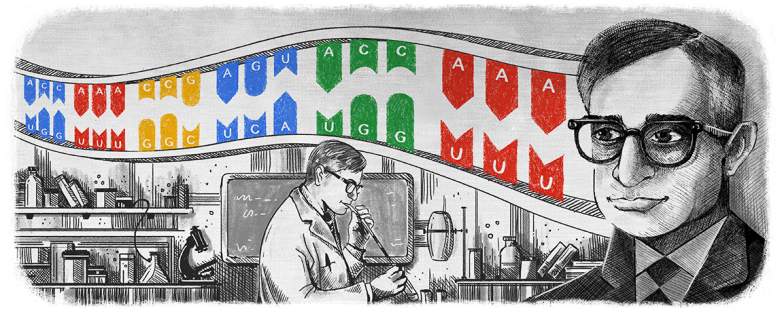
Google doodle on Har Gobind Khorana.
Khorana’s life story is very inspirational, and a lot of it is attributed to his father. “Dr. Khorana was born in 1922 as the youngest of five children. His father instilled the importance of learning by helping his children to read and write, which wasn’t common for villagers at the time,” Google noted.
His brilliance shone through early, though. “Scholarships helped propel the budding scientist through his scholastic journey, obtaining his doctorate in organic chemistry in 1948,” noted Google.
According to the Nobel Prize biography for Khorana, he was “born of Hindu parents in Raipur, a little village in Punjab, which is now part of eastern Pakistan. The correct date of his birth is not known; that shown in documents is January 9th, 1922.”
The biography reports that Khorana was the son of a patwari, a “village agricultural taxation clerk in the British Indian system of government. Although poor, his father was dedicated to educating his children and they were practically the only literate family in the village inhabited by about 100 people.”
2. Khorana Won the Nobel Prize After Discovering Key Information About Cells
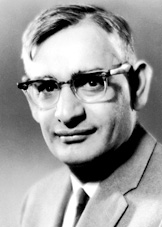
Har Gobind Khorana.
A career at prominent universities gave Khorana the ability to conduct world-changing research. “Dr. Khorana conducted research at universities in England, Switzerland, and Canada, and it was at the University of Wisconsin that he and two fellow researchers received the Nobel Prize in Physiology or Medicine in 1968,” Google noted.
“Together, they discovered that the order of nucleotides in our DNA determines which amino acids are built. These amino acids form proteins, which carry out essential cell functions.”
Explains Encyclopedia.com, “In addition to developing methods for investigating the structure of the nucleic acids, Khorana introduced many of the techniques that allowed scientists to decipher the genetic code and show how ribonucleic acid (RNA ) can specify the structure of proteins.”
3. Khorana Developed the First Synthetic Gene & Won Many Awards
Some might be content to stop at winning the Nobel Prize, but for Khorana that was just the beginning. “His accomplishments didn’t stop there. Fewer than five years later, Dr. Khorana made a second scientific breakthrough when he constructed the first synthetic gene,” Google wrote. “He received a host of awards during his lifetime, including the National Medal of Science.”
According to Al-Jazeera, this is one of his signature accomplishments. “In 1972, Khorana was also recognised for the construction of the first artificial gene, while four years later he announced that he had gotten an artificial gene to function within a bacterial cell,” the site reports.
Explained Encyclopedia.com, “Four years after winning the Nobel Prize, Khorana succeeded in synthesizing the first wholly artificial gene. In the 1980s Khorana synthesized the gene for rhodopsin, a protein involved in vision.”
4. Khorana’s Wife Brought ‘Consistent Purpose’ to His Life
Har Gobind Khorana “was married in 1952 to Esther Elizabeth Sibler, who is of Swiss origin,” according to The Nobel Prize biography. “Esther brought a consistent sense of purpose into his life at a time when, after six years’ absence from the country of his birth, Khorana felt out of place everywhere and at home nowhere.”
The bio reports that the couple have three children together: “Julia Elizabeth (born May 4th, 1953), Emily Anne (born October 18th, 1954), and Dave Roy (born July 26th, 1958).” According to Al-Jazeera, “Khorana died on November 9, 2011. His death was announced by the Massachusetts Institute of Technology where he was a professor emeritus. He was survived by his children, Julia and Dave.”
5. Khorana Spent Time in India, England, Switzerland & America
Khorana lived in many countries throughout his life. According to DNAaftb.com, “Khorana went to Punjab University in Lahore and graduated with a Master of Science. In 1945, a fellowship from the government of India gave him the opportunity to study abroad. He went to the University of Liverpool where he obtained his doctorate.”
“Khorana lived in India until 1945, when the award of a Government of India Fellowship made it possible for him to go to England and he studied for a Ph. D. degree at the University of Liverpool. Roger J. S. Beer supervised his research, and, in addition, looked after him diligently. It was the introduction of Khorana to Western civilization and culture,” the Nobel biography says.
According to the bio, “Khorana spent a postdoctoral year (1948-1949) at the Eidgenössische Technische Hochschule in Zurich with Professor Vladimir Prelog. The association with Professor Prelog molded immeasurably his thought and philosophy towards science, work, and effort.”
